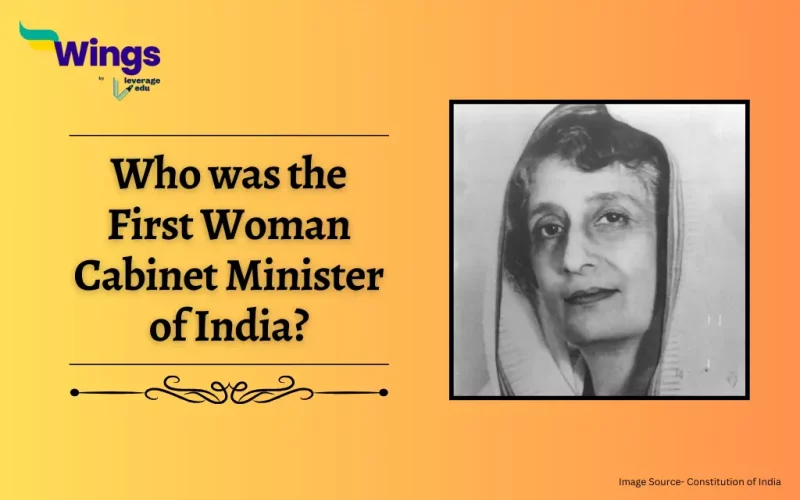The First Woman Cabinet Minister was Amrit Kaur (née Ahluwalia). She was the Cabinet Minister for ten years from 1947 to 1957 as the Health Minister and inspired many women. Furthermore, she was also a part of the Constituent Assembly of India that framed the Indian Constitution along with the first woman Chief Minister of India. Amrit was also a part of the Indian Independence movement and the INC. Read on to learn more about the First Woman Cabinet Minister of India and her achievements.
Who was Amrit Kaur?
Table of Contents [show]
Kaur was born on the 2nd of February 1886 in Lucknow, Uttar Pradesh and was the daughter of Priscilla Golaknath and Harnam Singh, a member of the Kapurthala royal family.
- At the Sherborne School for Girls, she completed her early education.
- Amrit completed her college education at Oxford University.
- Moreover, she was the only daughter and youngest among ten of her other siblings.
- Amrit was raised a Protestant Christian as her father converted to Christianity through Golkanath Chatterjee, his wife Priscilla’s father.
Did you know? Amrit had a very important part in establishing the All India Institute of Medical Sciences (AIIMS), a premier medical institution in India.
The Achievements of the First Woman Cabinet Minister of India
In 1918, Amrit returned to India, making her presence known to all. After the Jallianwala Bagh Massacre in 1919, she joined the INC and focused on social reformation as well.
- Additionally, she wanted to abolish the devadasi system as well as the practice of child marriage and purdah.
- In 1919, she met Gandhi whose thoughts she admired and worked as his secretary for 16 years.
- Amrit founded the All India Women’s Conference in the year 1927.
- In 1930, she was involved in the Dandi March and was arrested by the British.
- In the year 1937, Amrit was arrested again for sedition when she went to Bannu, NWFP on a goodwill mission.
- Furthermore, she was appointed by the British to the Advisory Board of Education. However, she resigned during the Quit India Movement of 1942 and faced imprisonment for her active participation.
- Amrit also held the role of Chairperson for the All India Women’s Education Fund Association.
- Moreover, she was a member of the Executive Committee at Lady Irwin College in New Delhi.
- Her contributions extended internationally as she represented India at UNESCO conferences in London (1945) and Paris (1946).
- Furthermore, Amrit prioritised tackling health concerns like malaria and tuberculosis.
- She spearheaded national campaigns to control their spread and implemented large-scale vaccination programs, including the world’s largest BCG vaccination program for tuberculosis.
Thus, Amrit’s dedication and leadership in the healthcare sector during India’s formative years laid the foundation for the country’s public health system.
Related Blogs
| Who was the First Woman Chief Minister in India? | Who is The First Woman President of India? |
| Who was the First Woman Advocate of India? | Who was the First Woman IAS Officer of India? |
Lastly, we hope you liked our blog and gained an understanding of the First Woman Cabinet Minister of India. Moreover, you may even read more blogs and empower yourself with knowledge regarding Civics and Polity!
 One app for all your study abroad needs
One app for all your study abroad needs















 45,000+ students trusted us with their dreams. Take the first step today!
45,000+ students trusted us with their dreams. Take the first step today!
